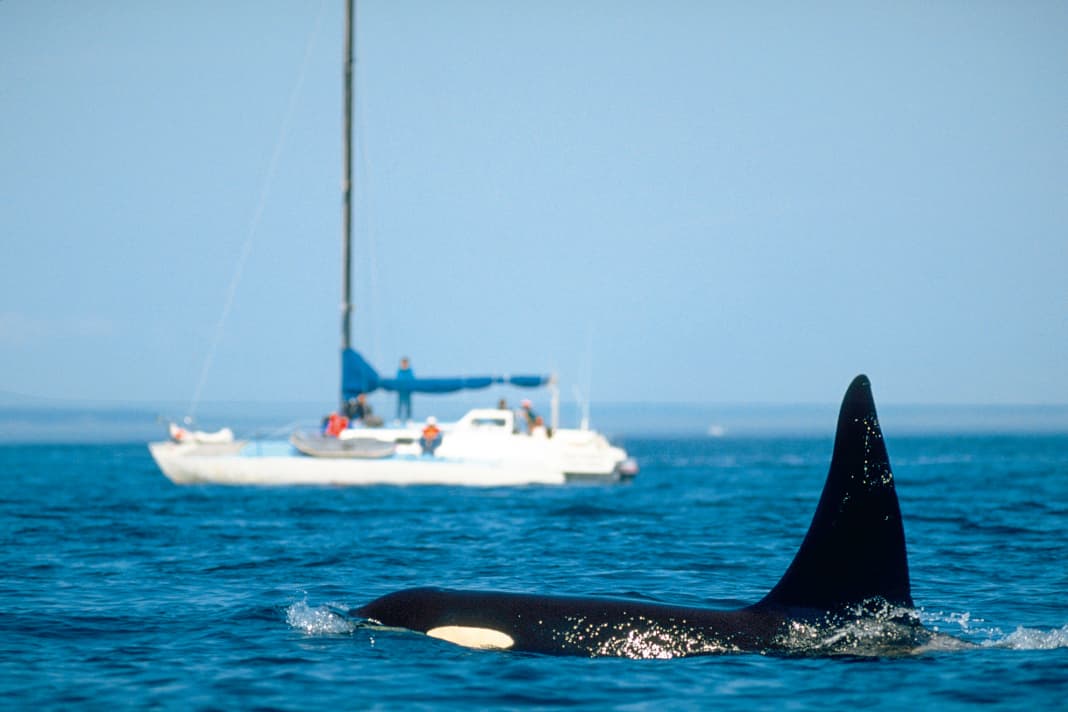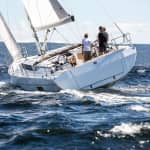The company was founded by Heikendorf marine biologist and professor Dr Boris Culik, who worked for the Geomar research institute in Kiel for many years. He was concerned with the problem of harbour porpoises in the Baltic Sea. "They repeatedly get caught in fishermen's gillnets and die," says Culik. To prevent this, he developed an active pinger that sends a warning signal to the animals: "In principle, the pinger warns the animals in their sounds 'Go away', there is danger here." This development is now a proven, functioning standard and has been used in fisheries on the German Baltic coast for years to reduce the bycatch of harbour porpoises. The success rate is 80 per cent and the devices are offered free of charge to every fisherman in Schleswig-Holstein by the Baltic Sea Info Centre in Eckernförde.
The idea was born during the harbour porpoise protection
In the course of this development, sailors approached the North German. "They told me about the problems with the orcas off Portugal and Spain, so I started to look into the problem in 2021." This was complex, as each species uses its own "language" on its own frequency. "It's even the case that the Baltic Sea harbour porpoises speak their own 'dialect', so to speak," the gillnet pingers for the North Sea had to be adapted accordingly. Exactly the same was necessary for a similar device with the orcas.
"We first had to find the right frequency and sounds in the ultrasonic range, which are a warning in the language of the orcas, so to speak, that makes them stay away," says Culik. However, as there was research on orcas and net deterrents in Scandinavia, Culik found what he was looking for. Once these had been found, the next question arose: how do you equip a ship with exactly this technology? Initially, he considered a permanently installed solution on the rudder blade, but this was not practical. The sailors were more interested in a flexible solution, as there are not many areas in the world where orcas attack yachts.
The Orca-Pinger is simple, handy and affordable
This led to the design of the Wal-Pal: it is a torpedo-shaped, 20-centimetre-long and six-centimetre-thick transmitter unit with electronics and battery that emits the actual sound. It is lowered into the stern of the yacht on a ten metre long wire rope with a scissor board. Once the yacht is underway, the Wal-Pal sends a signal forwards in the direction of the rudder blade. "The signal reaches about 200 metres forwards and about 100 metres to the sides, so it doesn't bother animals that are further away," says Professor Boris Culik.
There are now also technical EU standards, which the device naturally fulfils. It is important that the yacht remains underway so that the whale pal does not hang down, then it sends the signal downwards. "We had a crew that took the speed out of the ship when the whales were sighted. As a result, the unit hung vertically downwards at a depth of ten metres and no longer transmitted the signal to the rudder, and the animals damaged it."
Culik has now sold almost 200 of the devices, which cost 498 euros, and has received initial feedback; he is also working with Trans-Ocean on a project. "I ask all buyers to tell me about their experiences. Unfortunately, only eleven per cent have done so so far."
"The number of responses from the customers contacted was unfortunately lower than we had hoped, totalling only 19. We assume that the sailors who did not get in touch had no reason to do so because no sightings or damage had occurred. Of course, this is only an assumption. On the other hand, both sailors who have suffered damage so far contacted us immediately and complained bitterly. This figure can therefore be categorised as very reliable. A total of six sailors reported interactions, four of which were without damage (67%). 13 sailors had no sightings," says Culik.
Initial experience gives great hope
These figures are of course only provisional, as the data situation is still very thin due to the small number of field reports. If the difference between 11 % damage (general) and only 1 % (when using the Wal-Pal) is confirmed in the future, the Wal-Pal would reduce the probability of damage by 90 %.
On the Webpage of the manufacturer you can find customer testimonials and all other technical data. The transmitter unit is fitted with a lithium-ion battery that lasts for around one and a half years of continuous operation, with correspondingly less use only when passing through the sea areas concerned.
"The weather conditions in which the device is used are also important," says Culik. "If it's windy, the sea is rough and the yacht is generating more and more noise in the sea itself due to bow waves and movements, this absorbs some of the sound from the pinger." The effective range can then decrease. A boat speed of no more than six to seven knots is also ideal, as otherwise the whale-pal will be towed too close to the surface. Above this, it makes sense to reduce speed in the event of a sighting.
So it could be that for the first time since the orca problems began around three years ago, the sailing world is being offered a solution to the problem that is not too technically expensive or complicated. And that is good news for all crews who either want to ferry to the Mediterranean or sail to the Canary Islands, for example to sail transatlantic.






